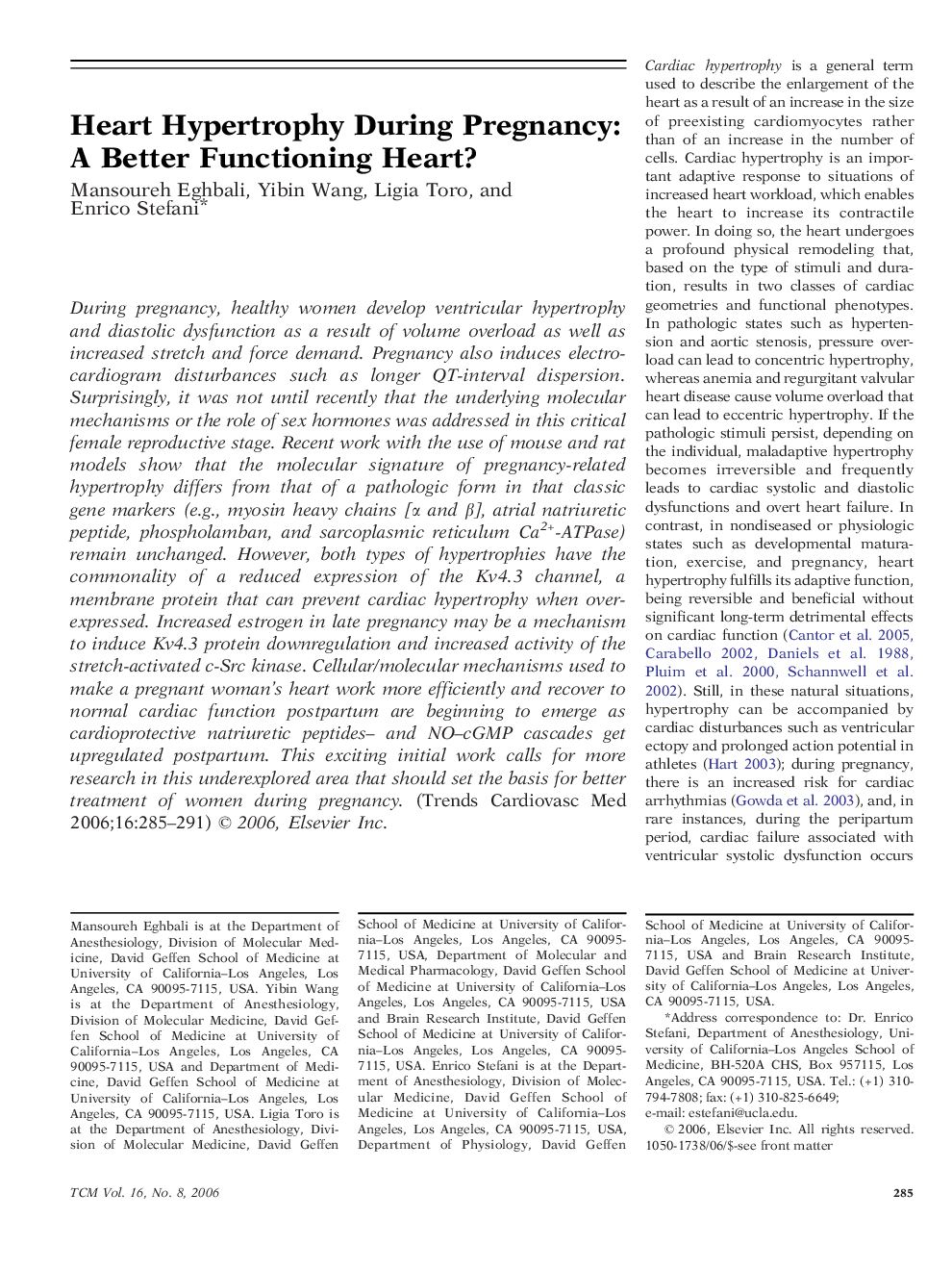| Article ID | Journal | Published Year | Pages | File Type |
|---|---|---|---|---|
| 3031535 | Trends in Cardiovascular Medicine | 2006 | 7 Pages |
During pregnancy, healthy women develop ventricular hypertrophy and diastolic dysfunction as a result of volume overload as well as increased stretch and force demand. Pregnancy also induces electrocardiogram disturbances such as longer QT-interval dispersion. Surprisingly, it was not until recently that the underlying molecular mechanisms or the role of sex hormones was addressed in this critical female reproductive stage. Recent work with the use of mouse and rat models show that the molecular signature of pregnancy-related hypertrophy differs from that of a pathologic form in that classic gene markers (e.g., myosin heavy chains [α and β], atrial natriuretic peptide, phospholamban, and sarcoplasmic reticulum Ca2+-ATPase) remain unchanged. However, both types of hypertrophies have the commonality of a reduced expression of the Kv4.3 channel, a membrane protein that can prevent cardiac hypertrophy when overexpressed. Increased estrogen in late pregnancy may be a mechanism to induce Kv4.3 protein downregulation and increased activity of the stretch-activated c-Src kinase. Cellular/molecular mechanisms used to make a pregnant woman's heart work more efficiently and recover to normal cardiac function postpartum are beginning to emerge as cardioprotective natriuretic peptides– and NO–cGMP cascades get upregulated postpartum. This exciting initial work calls for more research in this underexplored area that should set the basis for better treatment of women during pregnancy.
